En Terre: Imaginaries of Sustainability and Earthen Architecture in Senegal
The contemporary architectural imperative to build more sustainably often manifests in bureaucratic certification schemes or in luxury oases and enclaves which twist environmental care into the aestheticized vanguard of global gentrification. But it can also show up in the media's celebrations of time-intensive, small-scale humanitarian projects and sustainable development interventions. “Nature” is still here, not as the biosphere to be governed or as a stylized luxury product, but more subtly, within the percieved simplicity and honesty of the vernacular. This version of sustainability often shows up in media coverage of projects using local materials - a term which, for outside observers, often indexes not so much a material's actual provenance as a generic ideal of context and low-impact living.
The material persistence of concrete, which for some used to herald the permanent horizon of modernity, now feels to many like the dead weight of pollution and waste. It appears to many European and North American audiences, for instance, as a symbol of industrial hubris, oppressive state planning, and environmental destruction. In comparison, the use of earth, mud, or dirt appears to offer a universal template for local sensitivity, a sort of anti-universal-universal for harmonizing natural materials with cutting-edge architectural experiments in parametric form.
How are technologies like earth construction rebranded and modernized, and how is their apparent novelty achieved and celebrated when earth building is among the oldest building techniques, still widely employed by people around the world every day?
One place to start untangling this question is in the extensive press coverage of two buildings built using local earth and aggregate, bamboo, and nontraditional geometries in rural eastern Senegal, both constructed for humanitarian purposes with the support of the Albers Foundation. This coverage can be situated in relation to the lack of attention paid to the work of Senegalese and other West African architects and engineers working to expand and rejuvenate earthen construction for their own reasons. While dozens of interviews and features uplift the former, the work of the latter barely appears in the English-language architecture and design press. These parallel but intersecting stories about building with “local materials” and “local know-how” in Senegal reveal distinct visions of how economic, social, and environmental futures are supposed to harmonize in the built environment.

Screenshot of press coverage: Volner, Ian. 2015. “Senegal’s Cutting-Edge Artists’ Residency.” Wall Street Journal, March 5, 2015, Magazine section. https://www.wsj.com/articles/senegals-cutting-edge-artists-residency-1425589612.

Screenshot of press coverage: Stevens, Philip. “Manuel Herz and Iwan Baan Present ‘The Many Lives of Tambacounda’ at the Venice Biennale.” Designboom (blog), May 23, 2021. https://www.designboom.com/architecture/manuel-herz-iwan-baan-many-lives-tambacounda-venice-biennale-05-23-2021/.
Thread cultural center (designed by Toshiko Mori Architect) and the Tambacounda hospital extension (designed by Manuel Herz) are not particularly well-known within Senegal, or to Senegalese people outside their immediate vicinities. But these two buildings have an outsize presence in the international architectural imagination. Like similar humanitarian projects, they circulate widely in design publications, win architectural prizes, and garner headlining interviews. They have been the subject of unending online and print coverage. In part, this can be attributed to the commendable level of care put into them on the part of designers - Herz, for instance, declined an invitiation to submit a proposal without a more robust plan for input from relevant parties in the city of Tambacounda, a response which effectively won him the competion - and because of the efforts of designated press and communications teams. But it can also be attributed to the fact that stories about these buildings tap into some audiences' imaginaries of materials like earthen bricks and bamboo as self-evidently virtuous, appropriate, and in line with sustainable development. These imaginaries are much easier to hold onto from a position outside of Senegal, where a very different affective grammar of materials is at work.
Media coverage of these two projects ranges from original reporting to formulaic rephrasings of press releases. The press commends the projects' use of local materials such as dried bricks made from earth and cement (often incorrectly identified as rammed earth), bamboo, or thatch, their use of traditional techniques, and their social mission. Mori, Herz, and the staff of the Albers foundation consistently highlight the interpersonal and institutional work behind the buildings, and push in particular for due credit to be given to Dr. Magueye Ba, a physician in the region who was instrumental in the execution of both projects (sometimes as general contractor, sometimes as construction site supervisor interpreting designs with workers, and sometimes as community liason). But the press rarely seems to take the hint, defaulting to stories about formal and material innovation in humanitarian contexts.
Serpentine, curvilinear, gently winding: the frequency of these words in project coverage suggests that curvature is self-evidently part of these buildings' appropriateness for their contexts, although whether non-linearity is supposed to be a general quality of this thing called the “local” or uniquely appropriate to eastern Senegal is less clear. Articles about these projects consistently establish oppositions in order to acclaim their successful juxtaposition: a parametric roof and traditional techniques; the technological and the natural; the cutting edge and the authentic; the expert and the vernacular. It’s not hard here to see a slide towards familar conflations of the West with the technological and everywhere else with the natural and the untrained.
Conceptions of the approaching end of the world were complemented with imaginaries of a utopian future, driven by a coming together of vernacular architecture and experimental technology.
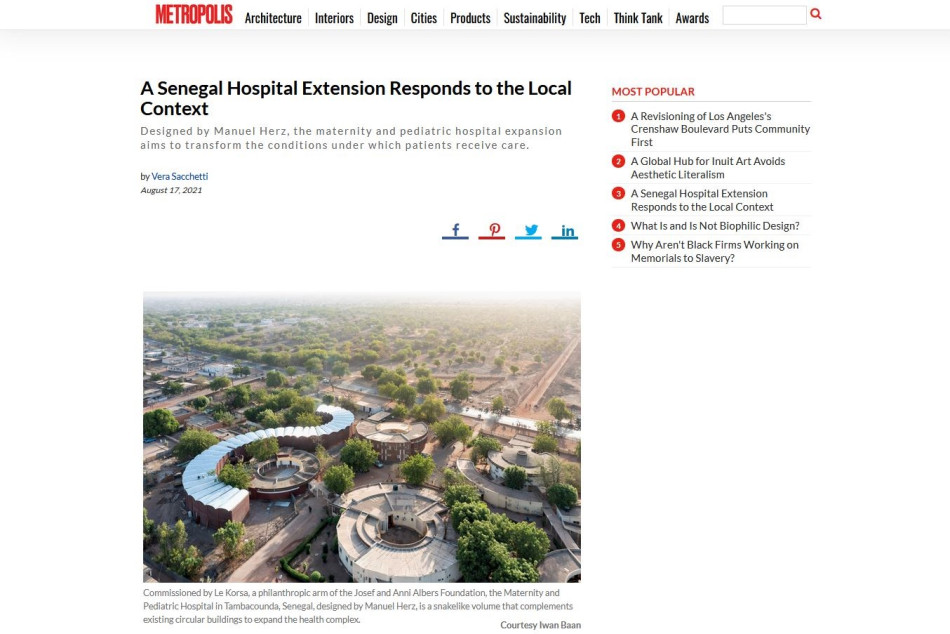
Screenshot of press coverage: Sacchetti, Vera. 2021. “A Senegal Hospital Extension Responds to the Local Context.” Metropolis, August 17, 2021. https://www.metropolismag.com/architecture/healthcare-architecture/manuel-herz-senegal-hospital/.
I thought about it and, after a while, I wrote a response declining the invitation, because I did not think it was correct for ten architects from Western centers like Basel, Berlin, London, New York, and Paris to invent a “solution” for a region that they have never visited, for doctors that they've never spoken to, for patients that they have never met, and for a kind of a craft and a climate that they don't know. I added to this that I would have preferred a more collaborative process of developing the project, rather than a competition.
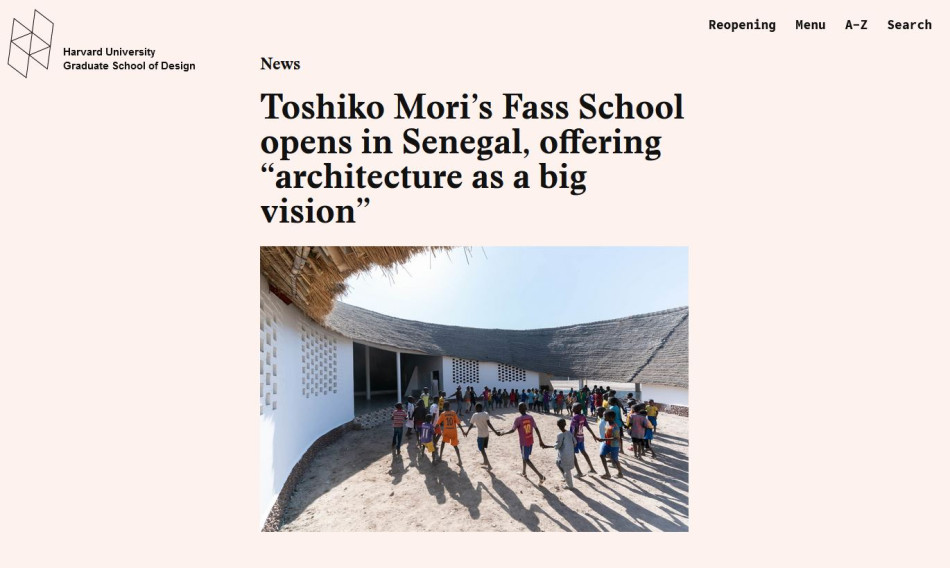
Screenshot of press coverage: Dagenais, Travis. “Toshiko Mori’s Fass School Opens in Senegal, Offering ‘Architecture as a Big Vision.’” Harvard Graduate School of Design (blog), March 5, 2019. https://www.gsd.harvard.edu/2019/03/toshiko-moris-fass-school-opens-in-senegal-offering-architecture-as-a-big-vision/.
The exhibition of Africans is not only confined to yesteryear circuses, museums, and zoos but is central to the practice and discourse of global development, public health, and environmental conservation. [they] are doing exactly what they have done with traditional knowledge of African villagers. Namely, to extract it from its organic production site in the countryside and isolating it in an urban-based, Western-type laboratory, completely excised from its originators, whose loss of intellectual property rights is not acknowledged or compensated.

Screenshot of press coverage: Mori, Toshiko. “Toshiko Mori on Architecture for Resource Stability.” Domus, November 6, 2020. https://www.domusweb.it/en/architecture/gallery/2020/11/06/architecture-for-resource-stability.html.
At the same time, the work of other architects and other expertise goes unremarked in the same venues. Worofila is a collective of architects based in Dakar, led by Nzinga B. Mboup and Nicolas Rondet, who share an interest in promoting and revitalizating the practice of earthen architecture. They frequently partner with Doudou Deme of Elementerre, a company which manufactures earthen bricks and manages earth construction projects. Their work is also bound up with ideas about what is appropriate for regional context, and also characterized by a willingness to experiment. But working predominantly with private clients outside of philanthropic contexts, they have to temper their advocacy with a sober assessment of how colonization and the contemporary dynamics of class, race, and ethnicity in West Africa have shaped the region's material culture.
There’s no climactic need in Senegal for closed windows or impermeable building envelopes, and earth is an ideal material for thermal regulation in the Sahel; this is why earth has been used to build here, as elsewhere, for thousands of years. But much of Senegal's growing middle class values closure, security, privacy, and solidity. Solid concrete buildings are conflated with solid investments of wealth. If concrete's material appeal has dulled in Europe and North America thanks to disillusionment with socialist housing schemes and crumbling infrastructure, or thanks to growing climate and biodiversity concerns, concrete remains a durable, accesible, and aspirational material in much of the world. In Senegal, it is often earth construction that is tainted by recent history and its damaging associations with rurality and poverty. Ironically, those most likely to commission an earthen building in Senegal today might be wealthy French or Lebanese retirees, institutions with ties to France, or international governmental bodies.
These architects are less interested in sustainability as an abstract virtue than in addressing tangible problems such as access to materials, year-round heat, and the high cost of electrical cooling. They are strategic about invoking or downplaying questions of heritage or cultural autonomy. When they do discuss these ideas, they are far more likely than the North American and European design press to discuss the role of colonization in the demonization and decline of earthen architecture, and to raise questions about the politics of knowledge and intellectual property. Through their work to remediate perceptions of earthen architecture in Senegal, these professionals destabilize the narrative of benevolent intervention and unnamed local craftspeople on which so much of the North American and European design press still depends.
Pour des raisons diverses, géopolitiques, économiques, idéologiques, etc, le béton de ciment a conduit le développement urbain de Dakar. Ce matériau importé du modèle de construction occidental a aujourd’hui totalement colonisé le paysage dakarois, au détriment des matériaux et savoir-faire locaux. Aujourd’hui, la mise en œuvre de matériaux biosourcés est considérée comme archaïque et il parait urgent de les remettre à la mode pour gagner en confort tout en réduisant l’impact carbone.
The stakes of the uneven appeal of earth become clearer still in relation to other architectual developments, equally ignored by the North American and European press. Dwarfing the work of all of these architects is Diamniadio, Senegal’s bid at a speculative “city of the future:” a real estate development zone east of Dakar complete with new airport, conference center, stadium, and luxury housing. Diamniadio is the supposed future home of more than 300,000 people. The government is investing billions into the project, though basic infrastructural services have struggled to keep pace with the rising (but often empty) concrete towers.
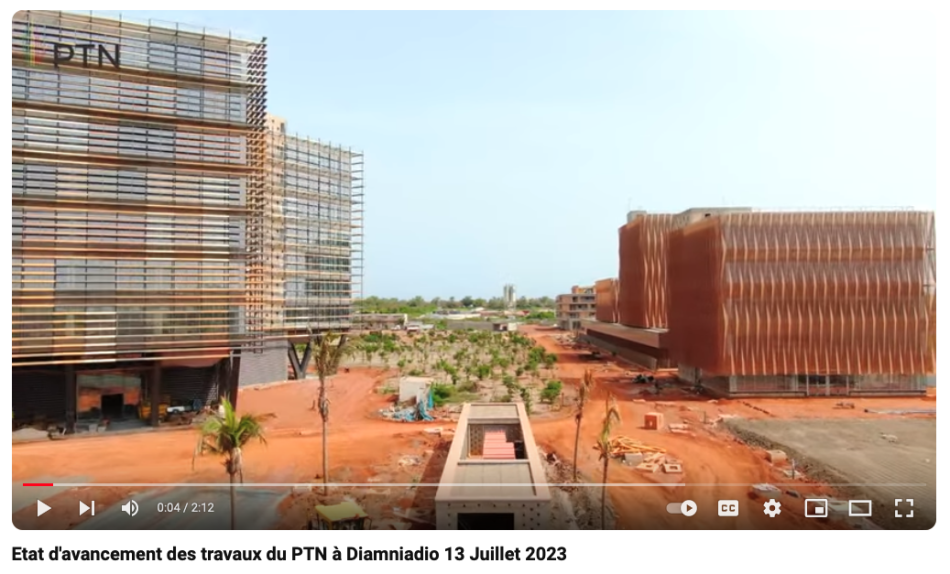
Drone footage of construction progress at Diamniadio, July 2023. Available at https://www.youtube.com/watch?v=Mz6c1PT3IsM
I came to Konza City to see what was actually happening. Perhaps something on the ground would make it clear to me what exactly McKinsey sold to the Kenyan government. When I arrived, the department heads were in a meeting, so I sat in the air-conditioned waiting room and stared at “Silicon Savannah” promotional materials, as if looking at the phrase long enough would convince me that this was, indeed, the epicenter of innovation in Africa.
Diamniadio provides a sense of the scale of the disconnect between Senegal's image in the architecture mediascape and actual developments and debates in Senegal. Digging beneath the uneven press coverage of earthen building in Senegal helps contextualize Diamniadio in relation to what Ben Mendehlson, speaking about Nigeria’s Eko Atlantic project, calls the “geosocial texture” of urban aspirations in specific places. Taken together, though, these patterns of publicity shed light, not only on the aspirations and investments of Senegalese citizens, but also on the aesthetic and ideological investments of designers and audiences in the Global North in how development and sustainability manifest elsewhere.
There's no easy way to assess the appropriateness of particular materials apart from the imaginaries and affects around them. Patterns of divergent taste reveal the environment’s connections to economic inequalities and colonial histories. Anyone interested the environmental impact of the built environment ought to pay close attention to how ecological virtues are signaled and where they circulate, the limits of fetishizing or demonizing particular materials, and the situatedness of visions for the future. What is appropriate and who gets to decide? When and why is the local the scale at which appropriateness is arbitrated? Where do subtle re-inscriptions of ideas about nature and technology slip into discourse? How do these ideological and ontological commitments shape and warp the sense of what is “interesting,” or even visible at all, to design and architecture communities?
Many thanks to Doudou Deme and Nzinga Mboup for taking the time to share their reflections about their ongoing work with me, and to the staff of the Thread Cultural Center and Le Korsa for their assistance, hospitality, and insight - in particular, Moussa Sene, Mamadou Kanté, Dr. Magueye Ba, Massamba Camara, and Allegra Itsoga.
-
Arantes, Pedro Fiori. The Rent of Form: Architecture and Labor in the Digital Age. Translated by Adriana Kauffmann. Univ Of Minnesota Press, 2019; Günel, Gökçe. Spaceship in the Desert: Energy, Climate Change, and Urban Design in Abu Dhabi. Experimental Futures. Durham: Duke University Press, 2019.↩
-
Forty, Adrian. Concrete and Culture: A Material History. London: Reaktion, 2012; Hatherly, Owen. “Not Concrete.” Scapegoat: Landscape, Architecture, Political Economy, no. 2 (2011): 29.↩
-
At the time at which I developed this research project, between 2018 through 2020, they had not appeared at all. Since 2021, a handful of outlets have begun to cover the work of these architects and engineers. See: Peyton, Nellie, and Christophe Van Der Perre. “Senegal Architects Revive Old Techniques with Earth over Concrete.” Reuters, May 17, 2021. https://news.trust.org/item/20210517075219-mw6pa/; Lewis, Jori. “The Future of Mud.” The Atlantic, July 5, 2022. https://www.theatlantic.com/science/archive/2022/07/senegal-dakar-construction-mud-architecture/661405/; Stathaki, Ellie. “Explore Dakar-Based Worofila’s Hyper-Local, Sustainable Architecture Approach.” Wallpaper*, December 18, 2022. https://www.wallpaper.com/architecture/west-african-studio-profile-series-studio-worofila-senegal.↩
-
Günel, Gökçe. 2019. Spaceship in the Desert: Energy, Climate Change, and Urban Design in Abu Dhabi. Experimental Futures. Durham: Duke University Press. 21↩
-
Herz, Manuel. 2019. “Dimensions of Practice.” E-Flux Architecture (blog). 2019. https://www.e-flux.com/architecture/positions/287534/dimensions-of-practice/.↩
-
Mavhunga, Clapperton. 2011. “Inertia and Development Approaches to Africa: Towards African Mobilities.” Thresholds 39 (January): 79–82. https://doi.org/10.1162/thld_a_00162.↩
-
Mboup, Nzinga Biegueng, and Caroline Geffriaud. 2021. “Habiter Dakar: Quels outils pour inventer une architecture Sénégalaise?” Goethe-Institut Senegal. https://www.goethe.de/resources/files/pdf219/catalogue1.pdf.↩
-
Baraka, Carey. “Kenya’s First Smart City Promised Everything. 13 Years on, It’s Still a Construction Site.” Rest of World, June 1, 2021. https://restofworld.org/2021/the-failed-promise-of-kenyas-smart-city/.↩
-
Mendelsohn, Ben. “Making the Urban Coast: A Geosocial Reading of Land, Sand, and Water in Lagos, Nigeria.” Comparative Studies of South Asia, Africa and the Middle East 38, no. 3 (December 1, 2018): 455–72. https://doi.org/10.1215/1089201x-7208801.↩
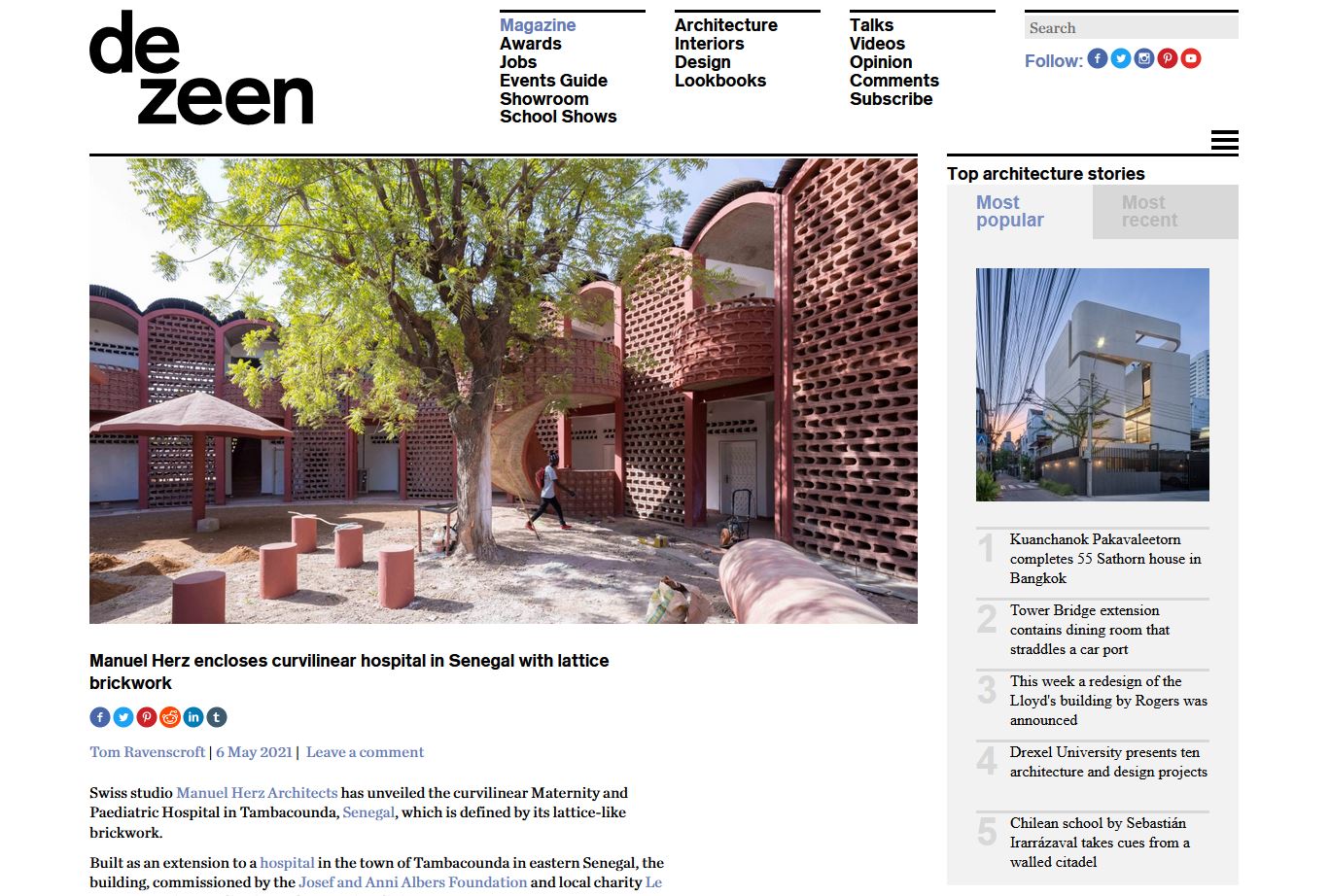
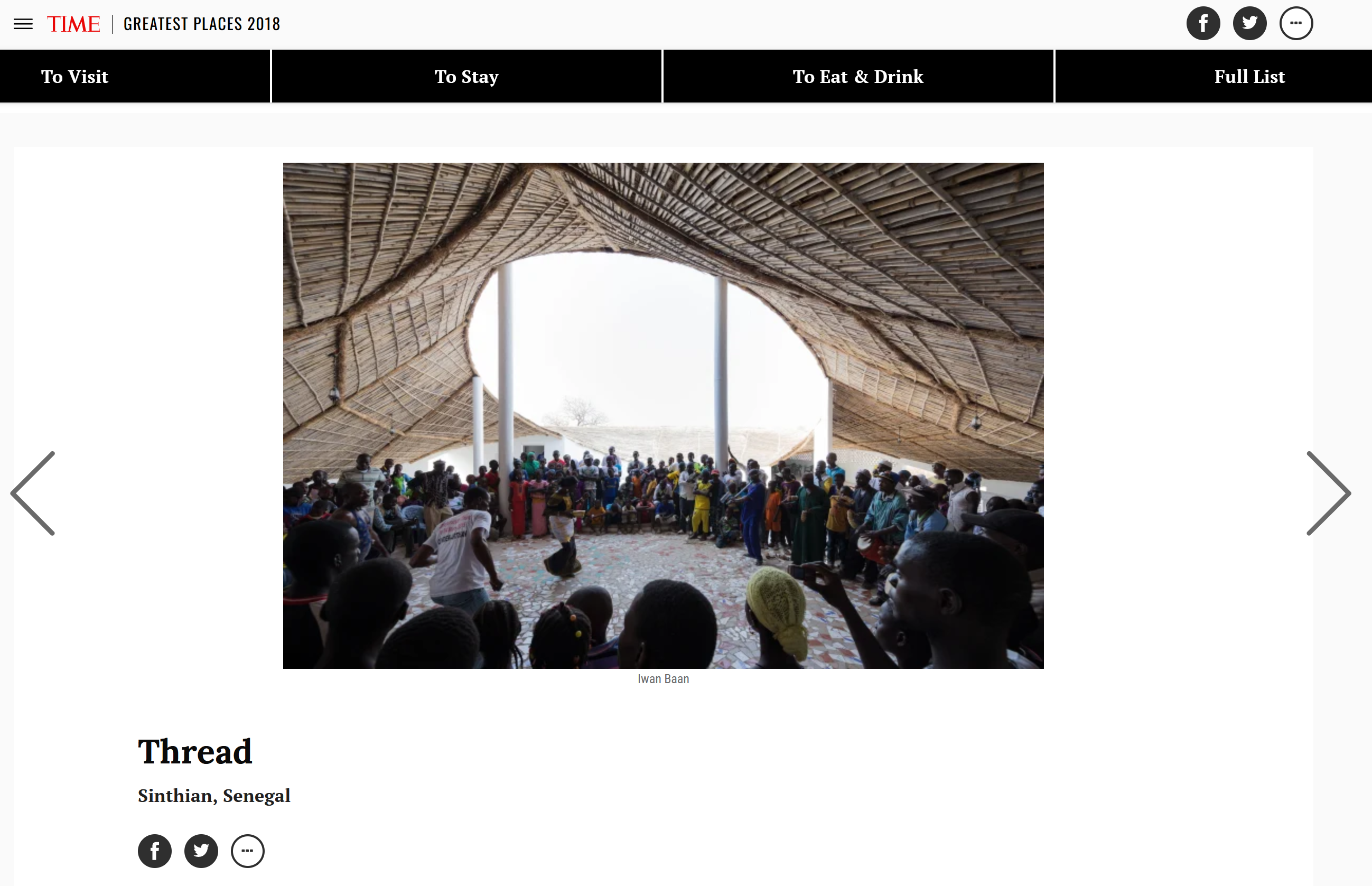


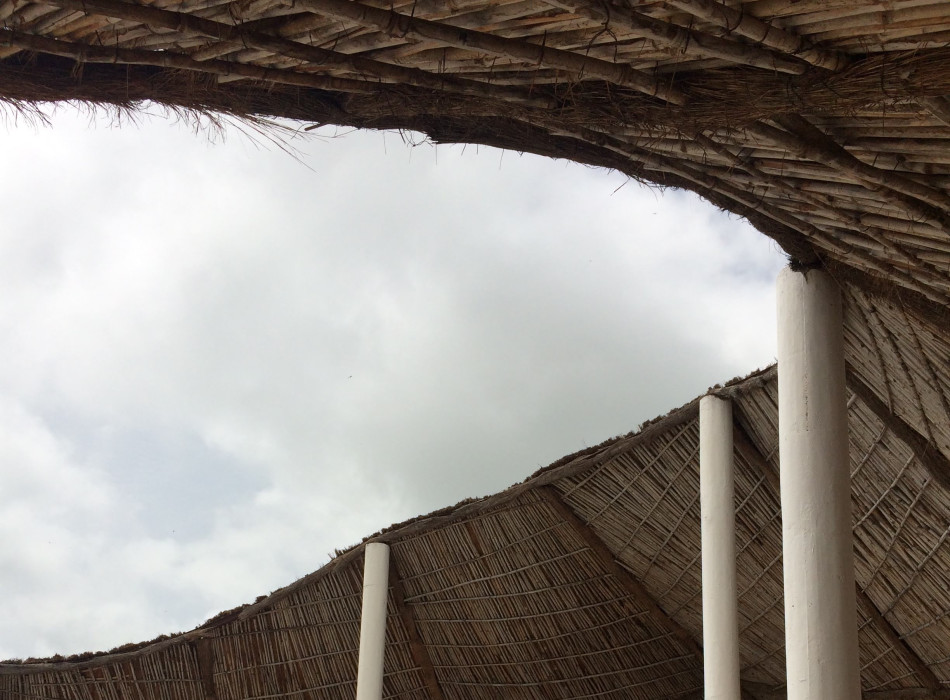
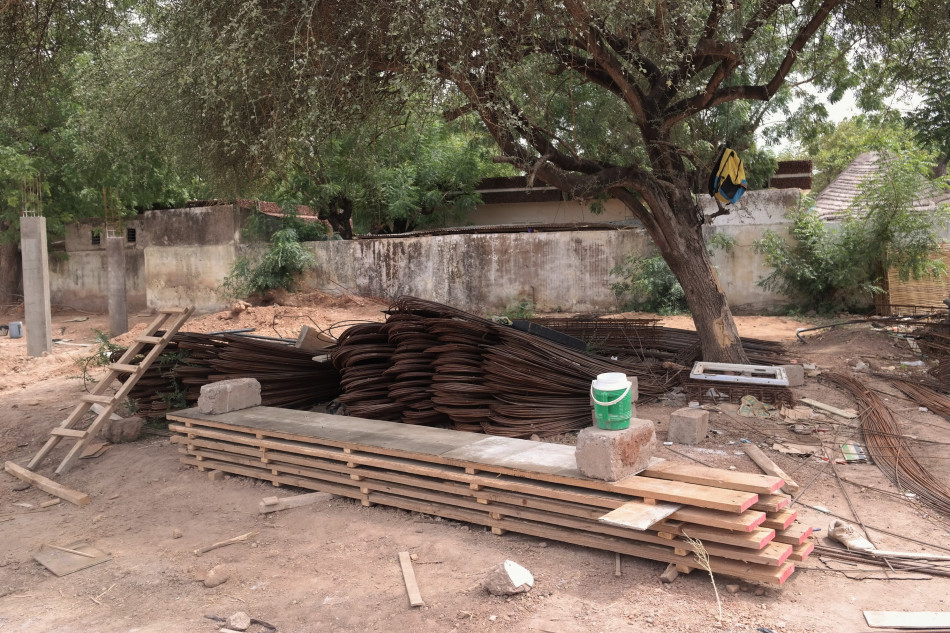

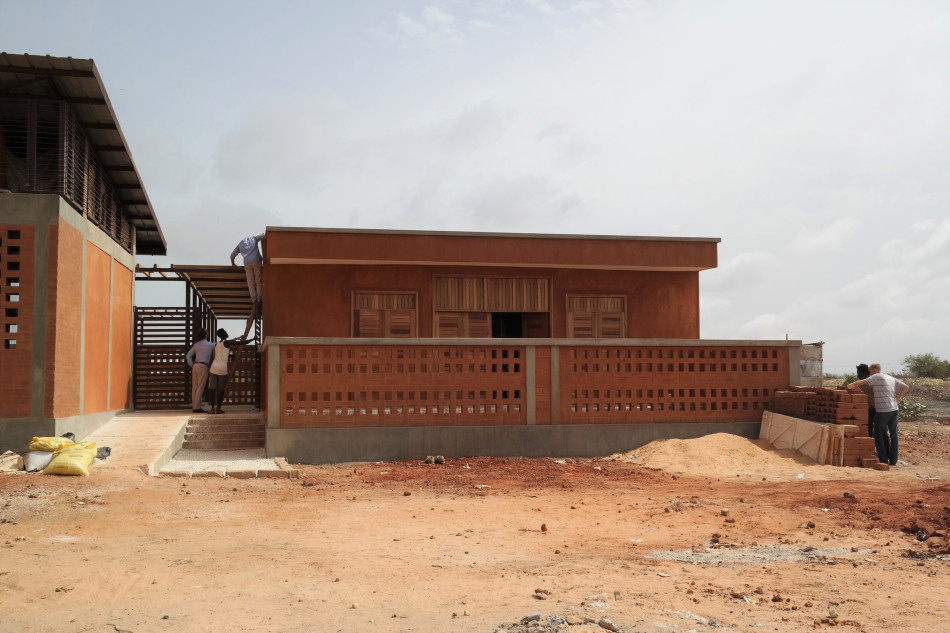


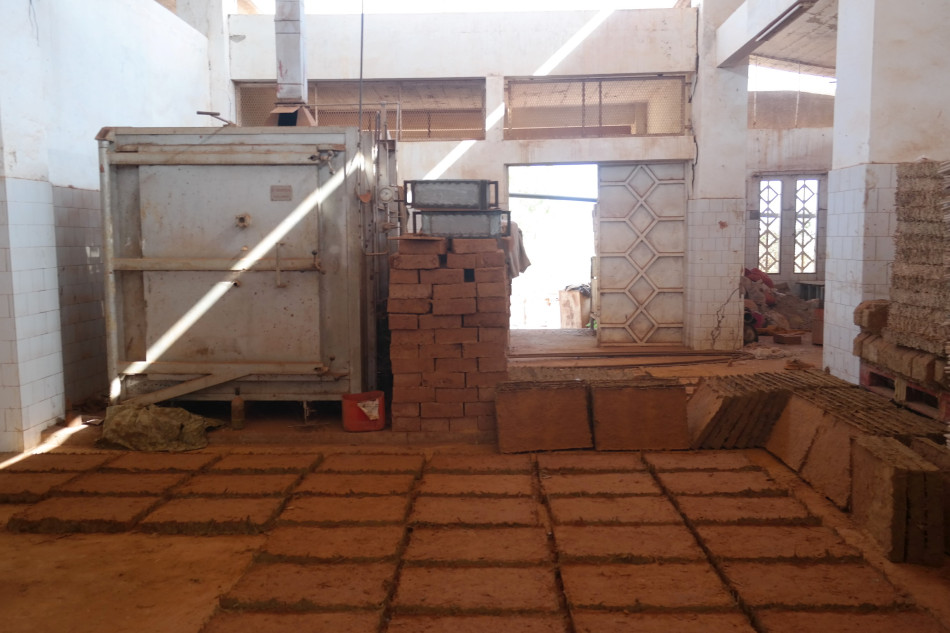
0 comments